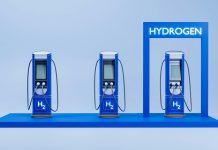
Scientists have made a big leap forward in making green energy cheaper and more efficient.
They’ve developed a new kind of catalyst, a substance that speeds up chemical reactions, which could help us get hydrogen—a clean fuel—from water without breaking the bank.
Normally, getting hydrogen from water needs two different catalysts: one for making hydrogen and another for making oxygen.
This makes the process expensive. But researchers have come up with a “bifunctional” catalyst that can do both jobs at once, using a mix of platinum and nickel.
This special blend not only cuts down on costs but also works better than using platinum or nickel alone.
However, there’s been a snag with these do-it-all catalysts.
After they help make hydrogen and oxygen, they tend to lose their oomph because their structure changes, which is like a chef losing their cooking skills after making a big meal.
To fix this, the team focused on creating a catalyst with a shape that keeps its structure, choosing an octahedral (eight-sided) design for the platinum-nickel mix.
This shape proved to be a game-changer, making the catalyst more than twice as effective as the single-metal versions.
The scientists noticed that after a lot of use, the catalyst’s performance dropped because the platinum part of the mix turned into platinum oxide.
But they didn’t stop there; they figured out how to turn the platinum oxide back into platinum, essentially giving the catalyst a “refresh” button. This not only brought the catalyst back to its original shape but also doubled its lifetime in tests that mimic real-world conditions.
This breakthrough is big news for the world of renewable energy. It means we’re a step closer to using a single catalyst for both parts of the water-splitting process, which can make hydrogen production much more cost-effective.
Hydrogen is a clean fuel that only leaves water when it’s used, so finding cheaper ways to produce it is crucial for moving away from fossil fuels and fighting climate change.
The work is a collaboration between scientists at the Korea Institute of Science and Technology (KIST), POSTECH, and Yonsei University.
They believe their discovery could speed up the use of “unitized renewable fuel cells” (URFCs).
These are systems that can both produce hydrogen and generate electricity, potentially making clean energy more accessible and affordable.
With this innovation, we’re one step closer to a future where clean, green hydrogen can power our world more affordably and efficiently, paving the way for a cleaner planet.



